'Harbour healthy' says report launched at CQU Gladstone
Published on 05 March, 2008
Years of in-depth specialist research culminated this week in the inaugural launch of the Gladstone region's first Eco-Health Report Card by the Port Curtis Integrated Monitoring Program (PCIMP) team.
Residents can rest assured the harbour's health scored well.
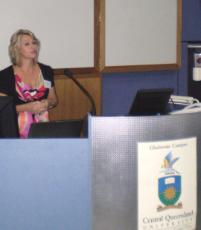
Dr Leonie Anderson addresses the Eco-Health Report Card launch
The Report Card was launched at Gladstone Campus in a session hosted by the PCIMP coordinator - CQU researcher Dr Leonie Andersen.
CQU is a member of PCIMP, along with major industrial companies and government bodies. Other key PCIMP research team members from CQU include Dr Felicity Melville, Associate Professor Larelle Fabbro and Dr Scott Wilson.
The launch was attended by around 80 people from throughout Queensland, including CEOs and GMs of major industries.
Dr Andersen described the ecosystem health study as essentially a measurement of the ability of an ecosystem to cope with stress from human and non-human impacts.
Using a range of accredited monitoring techniques based on a unique model developed by the research team, the Harbour was divided into 9 research zones. The data from 175 water quality sites and 59 intertidal sites within the zones was analysed, measured against Australian quality guidelines and then allocated a standardised score between zero and one.
"We translated the standardised scores into a zonal rating from A+ to F- and the results the harbour received literally speak for themselves and show that overall, Port Curtis is in pretty good shape," Dr Andersen said.
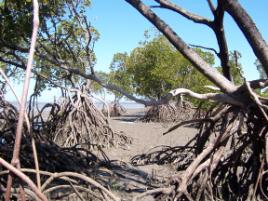
"We did find higher levels of metals in the water in the inner harbour compared to outer reference zones however all levels met or were below Australian Water Quality Guidelines and the same can be said for metals in sediments."
"It is also important to note that we did research the impacts of the Global Peace oil spill and it showed that although there was an initial impact on mangroves and crab populations, they recovered well and we estimate that less than 0.02% of the Port Curtis mangrove system was affected," Dr Andersen said.
PCIMP is unique in the fact that it is the first regional project of its type and it has relied primarily on private funding, while metropolitan waterway health report cards generally receive Government support.
"This is a very special project for the fact that our local industries and other PCIMP members saw the value and committed to support the research financially whilst enabling our research team to independently develop monitoring programs and analyse the data," Dr Andersen said.
Dr Andersen worked closely with local researchers Dr Felicity Melville, Dr Scott Wilson and Dr Larelle Fabbro to conduct the hands-on monitoring and analysis and enlisted the support of highly recognised specialists Dr Andrew Storey, Dr Peter Teasdale, Dr Dianne Jolley, and Dr Michael Rasheed from other national research institutions to provide external expertise.
"We now have a benchmark level for the health of our harbour and we are looking to expand our monitoring terms of reference to go further in-depth in the future and explore some of the trends we noticed in the current results."
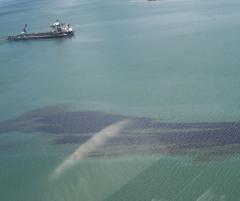
In particular, the health of 13 seagrass meadows showed a positive trend from 2005 to 2006 in which subtidal meadows increased and intertidal meadows reached record high densities.
"Not all items that we measured contributed to the overall report card rating because they don't yet have a known response to stressors or there are no guideline values for us to compare with."
Dr Andersen said updates to the report would be produced at regular intervals based on the annual data results so that changes in estuary health can be monitored and managed over time.
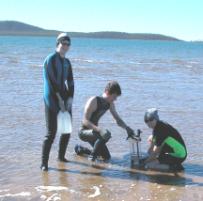
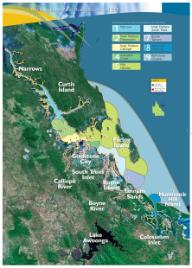
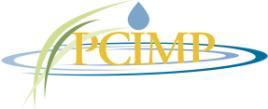
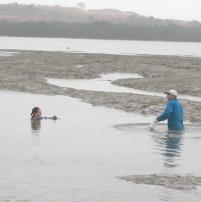
Core sampling in Port Curtis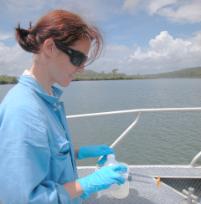
Dr Felicity Melville in the field

